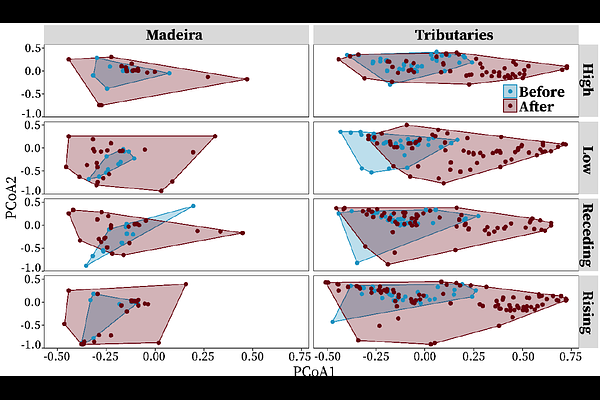Impact of Run-of-River Damming on Increasing Phytoplankton Biomass and Species Shift in a Large Amazonian River: Ecological Implications and Recommendations

Impact of Run-of-River Damming on Increasing Phytoplankton Biomass and Species Shift in a Large Amazonian River: Ecological Implications and Recommendations
Pineda, A.; Campos, B. M.; Zanon, F. M.; Felicio, R. S.; Rodrigues, L. C.
AbstractRun-of-river (ROR) dams, often perceived as having minimal environmental impact, can induce significant hydrodynamic changes that alter aquatic ecosystems. We investigated the impacts of an ROR dam on the Madeira River, the largest Amazon tributary, focusing on phytoplankton communities and their ecological implications. Our study examined changes in biomass and species composition before and after damming as well as their drivers in both the main channel and tributaries (N=549 samples). Following dam construction, we observed a shift in the phytoplankton community from lotic diatoms to lentic phytoflagellates. This transition was likely facilitated by altered hydrodynamics and possibly influenced by the decomposition of flooded vegetation in the dam\'s influence zone. The decomposition of this vegetation could explain both the observed increase in oxygen consumption and the subsequent rise in phytoflagellate biomass after damming. On the other hand, despite an overall increase in phytoplankton biomass, the values remained within oligo- and mesotrophic conditions, which related with low nutrient concentrations observed. However, we caution that the dam-created hydrodynamic conditions are optimal for phytoplankton growth, potentially exacerbating nutrient-related issues in the future. We recommend proactive management strategies to prevent nutrient enrichment from agricultural and livestock activities in isolated Amazon areas affected by dams, thereby mitigating potential water quality degradation linked to phytoplankton biomass increase.